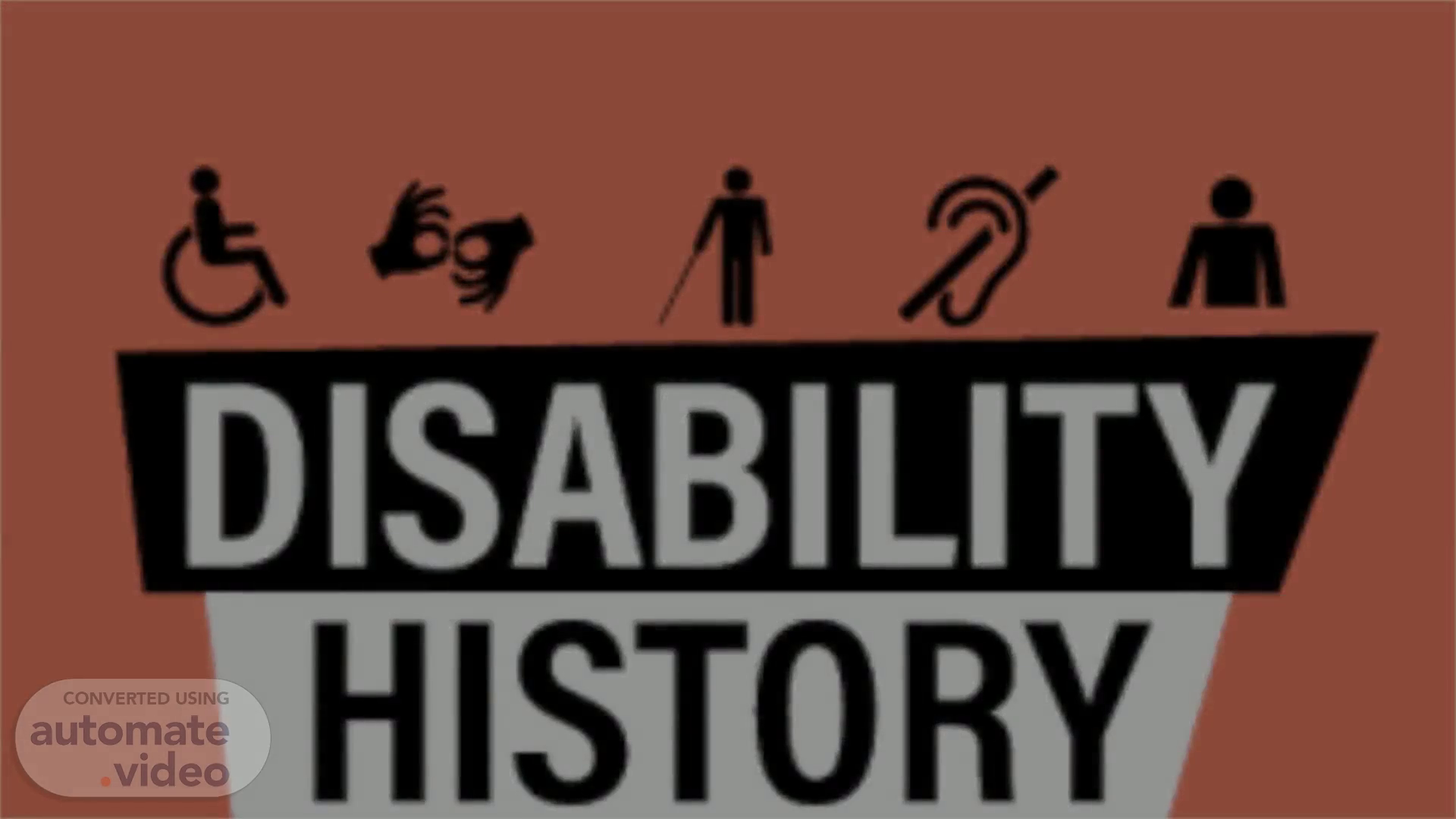
PowerPoint Presentation
Scene 1 (0s)
Disability Month - Students' Guild.
Scene 2 (12s)
A man with a developmental disability pushing a cart.
Scene 3 (25s)
Tatiana Lee smiling. 1 in 4 adults have a disability.
Scene 4 (34s)
John Lawson holding an umbrella with his hooks (Lawson is an amputee).
Scene 5 (52s)
In the 1930’s. R, 9-7 —. The treatment of people with disabilities over the past 100 years was often cruel and shocking. Prior to the 1930's, disabled people were viewed as unhealthy and defective, and thus were often abandoned by their own families due to a lack of understanding about their condition..
Scene 6 (1m 25s)
Dr Alexis Carrel, a Nobel Prize winner who was on the staff of the Rockefeller Institute published the book 'Man the Unknown', suggesting the removal of the mentally ill by small euthanasia institutions equipped with the suitable gases..
Scene 7 (1m 43s)
A mid World War Two, Hitler ordered a wide spread 'mercy killing' of the sick and disabled. The Nazi euthanasia program was code-named Aktion T4 and was instituted to eliminate 'life unworthy of life'..
Scene 8 (2m 3s)
By 1940, Hitler ordered 908 patients to be transferred from Schoenbrunn, an institution for retarded and chronically ill patients, to euthanasia instillation at Eglfing-Haar to be gassed. By 1941, Aktion T4 was suspended after accounting for over a hundred thousand deaths. However the program resumed without the use of gassing, instead murdering hundreds more disabled people by starvation and using others for medical experiments and soldier training practice..
Scene 9 (3m 39s)
559 000 patients were recorded in institutions across America. Patients were often admitted by families against their own will as they were seen as a burden; the patients could not contest the confinements. Many suffered abuse and neglect, substantial health and safety conditions, deprivation of rights, forms of electroshock therapy, painful restraints, negligent seclusion and experimental treatments and procedures..
Scene 10 (4m 10s)
In the 1700s, in institutions for people with disabilities, the use of chains was replaced with the use of straightjackets. A separate area in hospitals was also designated to people with disabilities. The first hospital was created for caring for idiots, or people with disabilities. Disabilities such as cerebral palsy and down syndrome were classified. Advancements like the wheel chair were created and registered In the early 1900s, the first sterilization law was created for people with disabilities. In the mid-1900s, autism was classified and a vaccine for polio was discovered..
Scene 11 (5m 56s)
People used to think that disabilities were caused through evil spirits and demons. They rejected these superstitious ideas, however, as medical advancements increased They tried to get rid of the spirits through various unsuccessful techniques: Trepanning: cutting a hole in the skull Spinning Treatment Electrical Shock Hydrotherapy.
Scene 12 (6m 23s)
All schools for people with disabilities were private institutions in the beginning . Students learned many educational activities and participated in various other activities such as sewing and basket weaving..
Scene 13 (6m 38s)
The first Disability Discrimination Act was passed in Australia in 1992. Worldwide, disability discrimination acts aim to prevent discrimination against people who have physical, intellectual, psychiatric, sensory, neurological or learning disabilities, physical disfigurements or disabilities that arise from a disease. The legislations also aim to prevent discrimination against families, friends and associates of people who have disabilities. It can be argued that a social stigma is not still attached with disabilities; however the need for anti discrimination acts reinforces the idea that people are still carrying misconceptions about disability, often leading to discrimination..
Scene 14 (8m 16s)
Individuals with Disabilities Education Act (IDEA).
Scene 15 (8m 40s)
Leaders in the Disability Movement Past and Present.
Scene 16 (8m 54s)
Richard Branson. Demi Lovato. Whoopi Goldberg. Michael J Fox.
Scene 17 (9m 10s)
Handwritten lettering thanks for watching Vector Image.